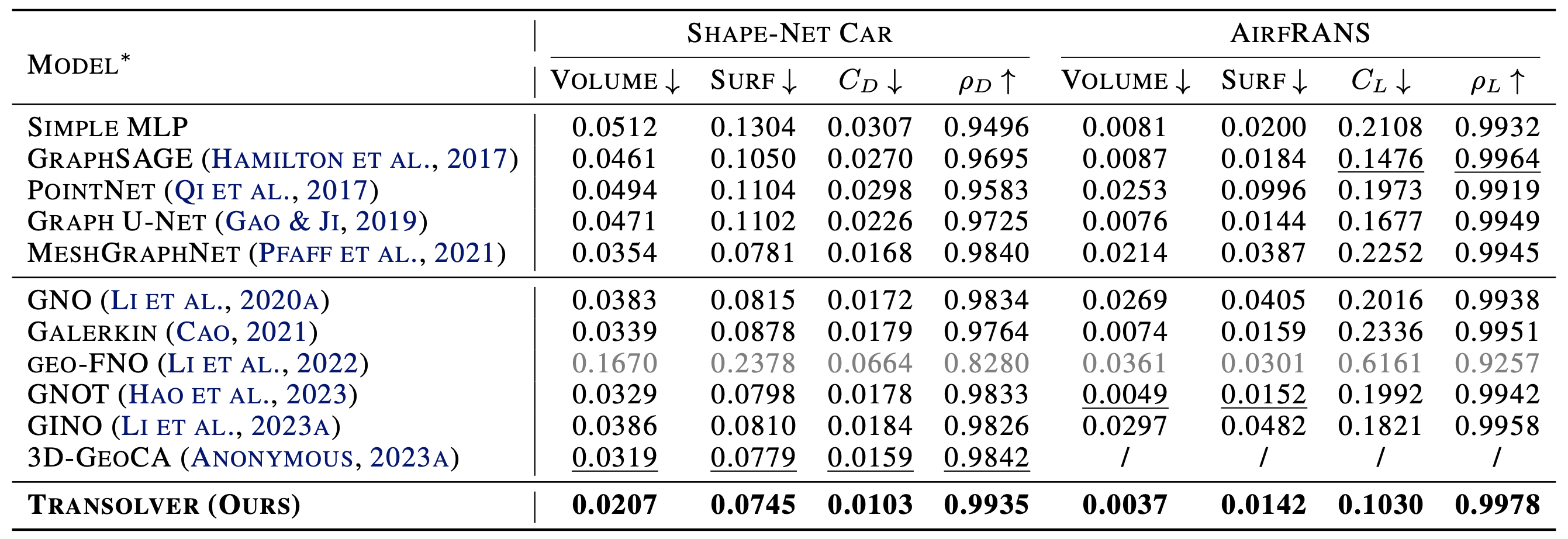Transolver: A Fast Transformer Solver for PDEs on General Geometries [Paper] [Slides] [Poster]
In real-world applications, PDEs are typically discretized into large-scale meshes with complex geometries. To capture intricate physical correlations hidden under multifarious meshes, we propose the Transolver with the following features:
- Going beyond previous work, Transolver calculates attention among learned physical states instead of mesh points, which empowers the model with endogenetic geometry-general capability.
- Transolver achieves 22% error reduction over previous SOTA in six standard benchmarks and excels in large-scale industrial simulations, including car and airfoil designs.
- Transolver presents favorable efficiency, scalability and out-of-distrbution generalizability.

Figure 1. Overview of Transolver.
All of the previous Transformer-based neural operators directly apply attention to mesh points. However, the massive mesh points in practical applications will cause challenges in both computation cost and capturing physical correlations.
Transolver is based on a more foundational idea, that is learning intrinsic physical states under complex geometrics. This design frees our model from superficial and unwieldy meshes and focuses more on physics modeling.
As shown below, Transolver can precisely capture miscellaneous physical states of PDEs, such as (a) various fluid-structure interactions in a Darcy flow, (b) different extrusion regions of elastic materials, (c) shock wave and wake flow around the airfoil, (d) front-back surfaces and up-bottom spaces of driving cars.

Figure 2. Visualization of learned physical states.
-
Please refer to different folders for detailed experiment instructions.
-
List of experiments:
- Core code: see ./Physics_Attention.py
- Standard benchmarks: see ./PDE-Solving-StandardBenchmark
- Car design task: see ./Car-Design-ShapeNetCar
- Airfoil design task: see ./Airfoil-Design-AirfRANS
Transolver achieves consistent state-of-the-art in six standard benchmarks and two practical design tasks. More than 20 baselines are compared.

Table 1. Results on six standard benchmarks.

Table 2. Results on two design tasks: Car and Airfoild design.

Figure 3. Comparison of Transolver and other models.
If you find this repo useful, please cite our paper.
@inproceedings{wu2024Transolver,
title={Transolver: A Fast Transformer Solver for PDEs on General Geometries},
author={Haixu Wu and Huakun Luo and Haowen Wang and Jianmin Wang and Mingsheng Long},
booktitle={International Conference on Machine Learning},
year={2024}
}
If you have any questions or want to use the code, please contact wuhx23@mails.tsinghua.edu.cn.
We appreciate the following github repos a lot for their valuable code base or datasets:
https://github.com/neuraloperator/neuraloperator
https://github.com/neuraloperator/Geo-FNO